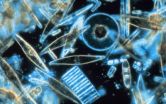(Press-News.org) This press release is available in German.
Leipzig. Researchers from Germany and Slovakia have pointed out that the chemical triclosan is one of those particularly harmful substances for the ecological status of rivers that are still not sufficiently monitored. With extensive monitoring conducted in the Elbe river basin that was more comprehensive than standard monitoring procedures, concentrations of the chemical at numerous test sites exceeded the predicted no-effect concentration (PNEC) for algal communities up to a factor of twelve. From the 500 river basin-specific pollutants investigated, triclosan (normally used as an anti-bacterial agent) ranked sixth as one of the most particularly harmful substances in Europe. It is therefore imperative to include this substance in routine monitoring programmes at the European scale, according to what researchers from the Helmholtz Centre for Environmental Research (UFZ) and the Environmental Institute in Slovakia have written in the journal „Environmental Science Pollution Research".
It is intended that the list of priority substances that have to be monitored by the authorities in Europe will be extended from its current 33 to 45 substances. The chemical triclosan is not one of these new candidates however. This chemical has been on the market since 1972 and it was not until 1998 that the first serious effects were discovered. Until now triclosan has been used as an antibacterial and antifungal agent in personal care products (e.g. toothpaste) and sportswear. Scientists were also very concerned about the fact that nowadays triclosan cannot only be detected in organisms living in wastewater but also in human plasma and in breast milk. Therefore, harmful effects extending beyond water organisms cannot be excluded.
Approximately 350 tons of triclosan were used in the European Union in 2005. However, it is still not monitored in many parts of Europe. " Substances that are not on the list of priority substances do not have to be monitored and substances that are not monitored are usually not included on the list, because too little is known about their environmental relevance", Dr. Peter von der Ohe from the UFZ portrays this dilemma. Within the EU-research project MODELKEY scientists have therefore been closely examining several hundred pollutants in different European river catchment areas and have come up with suggestions on how the monitoring of rivers for chemicals could be improved.
INFORMATION:
Tilo Arnhold
Publications:
Peter Carsten von der Ohe, Mechthild Schmitt-Jansen, Jaroslav Slobodnik and Werner Brack (2012): Triclosan - the forgotten priority substance? Environ Sci Pollut Res. 19:585 – 591, DOI 10.1007/s11356-011-0580-7
http://dx.doi.org/10.1021/es3028378
The study was funded by the European Commission about the project MODELKEY and the German Research Foundation (DFG).
Franz, S., Altenburger R., Heilmeier H., Schmitt-Jansen M. (2008): What contributes to the sensitivity of microalgae to triclosan? Aquatic Toxicology, 90, 102-108.
http://dx.doi.org/10.1016/j.aquatox.2008.08.003
Further Information:
Helmholtz Centre for Environmental Research (UFZ)
Dr. Peter Carsten von der Ohe/ Dr. Mechthild Schmitt-Jansen/ Dr. Werner Brack
Phone: +49-341-235-1581, -1532, -1531
http://www.ufz.de/index.php?en=14838
http://www.ufz.de/index.php?en=17161
http://www.ufz.de/index.php?en=17477
or via
Tilo Arnhold (UFZ Press Office)
Phone: +49-341-235-1635
http://www.ufz.de/index.php?en=640
Links:
UFZ-Core Subject Area "Chemicals in the Environment / Health":
http://www.ufz.de/index.php?en=30503
EU-Projekt MODELKEY:
http://www.modelkey.org/
Triclosan needs to be monitored
2012-10-26
ELSE PRESS RELEASES FROM THIS DATE:
Results of the AIDA STEMI MRI sub-study presented at TCT 2012
2012-10-26
MIAMI, FL – OCTOBER 25, 2012 – A study confirmed no differences in various measures of heart damage, according to cardiac magnetic resonance (MRI) imaging, in patients receiving the anti-clotting medication abxicimab directly into the heart (intracoronary) compared to those receiving it intravenously (IV). The results of the AIDA STEMI MRI sub-study were presented today the 24th annual Transcatheter Cardiovascular Therapeutics (TCT) scientific symposium. Sponsored by the Cardiovascular Research Foundation, TCT is the world's premier educational meeting specializing in interventional ...
Report: Bushmeat pushes Southern African species to the brink
2012-10-26
JOHANNESBURG, SOUTH AFRICA (October 25, 2012) – A recent report says illegal hunting of wildlife in South African Development Community (SADC) states can lead to the eradication of many species across extensive areas and even complete ecological collapse.
Africa's iconic large carnivores, such as cheetah, lion, leopard, and wild dog, are particularly vulnerable to this practice, either because they are caught in the bycatch from unselective methods such as snaring, or due to loss of prey. The report says that the scale and severity of the threat is such that, without ...
UC Davis researchers develop new drug delivery system for bladder cancer using nanoparticles
2012-10-26
(SACRAMENTO, Calif.) -- A team of UC Davis scientists has shown in experimental mouse models that a new drug delivery system allows for administration of three times the maximum tolerated dose of a standard drug therapy for advanced bladder cancer, leading to more effective cancer control without increasing toxicity.
The delivery system consists of specially designed nanoparticles that home in on tumor cells while carrying the anti-cancer drug paclitaxel. The same delivery system also was successfully used to carry a dye that lights up on imaging studies, making it potentially ...
New genomics study shows ancestry could help solve disease riddles
2012-10-26
LA JOLLA, CA – October 25, 2012 – Explosive advancement in human genome sequencing opens new possibilities for identifying the genetic roots of certain diseases and finding cures. However, so many variations among individual genomes exist that identifying mutations responsible for a specific disease has in many cases proven an insurmountable challenge. But now a new study by scientists at The Scripps Research Institute (TSRI), Scripps Health, and Scripps Translational Science Institute (STSI) reveals that by comparing the genomes of diseased patients with the genomes of ...
A 'nanoscale landscape' controls flow of surface electrons on a topological insulator
2012-10-26
CHESTNUT HILL, MA (October 25, 2012) – In the relatively new scientific frontier of topological insulators, theoretical and experimental physicists have been studying the surfaces of these unique materials for insights into the behavior of electrons that display some very un-electron-like properties.
In topological insulators, electrons can behave more like photons, or particles of light. The hitch is that unlike photons, electrons have a mass that normally plays a defining role in their behavior. In the world of quantum physics, where everyday materials take on surprising ...
Changing the balance of bacteria in drinking water to benefit consumers
2012-10-26
WASHINGTON, Oct. 25, 2012 — The latest episode in the American Chemical Society's (ACS') award-winning Global Challenges/Chemistry Solutions podcast series reports that scientists have discovered a plausible way to manipulate the populations of mostly beneficial microbes in "purified" drinking water to potentially benefit consumers.
Based on a report by Lutgarde Raskin, Ph.D., in ACS' journal Environmental Science & Technology, the new podcast is available without charge at iTunes and from www.acs.org/globalchallenges.
In the new episode, Raskin explains that municipal ...
Small marine organisms' big changes could affect world climate
2012-10-26
In the future, warmer waters could significantly change ocean distribution of populations of phytoplankton, tiny organisms that could have a major effect on climate change.
Reporting in this week's online journal Science Express, researchers show that by the end of the 21st century, warmer oceans will cause populations of these marine microorganisms to thrive near the poles and shrink in equatorial waters.
"In the tropical oceans, we are predicting a 40 percent drop in potential diversity, the number of strains of phytoplankton," says Mridul Thomas, a biologist at Michigan ...
Small organisms could dramatically impact world's climate
2012-10-26
EAST LANSING, Mich. — Warmer oceans in the future could significantly alter populations of phytoplankton, tiny organisms that could have a major impact on climate change.
In the current issue of Science Express, Michigan State University researchers show that by the end of the 21st century, warmer oceans will cause populations of these marine microorganisms to thrive near the poles and may shrink in equatorial waters. Since phytoplankton play a key role in the food chain and the world's cycles of carbon, nitrogen, phosphorous and other elements, a drastic drop could have ...
Individual gene differences can be tested in zebrafish
2012-10-26
HERSHEY, Pa. -- The zebrafish is a potential tool for testing one class of unique individual genetic differences found in humans, and may yield information helpful for the emerging field of personalized medicine, according to a team led by Penn State College of Medicine scientists. The differences, or mutations, in question create minor changes in amino acids -- the building blocks of DNA -- from person to person. Zebrafish can be used as a model to understand what biological effects result from these genetic mutations.
Personalized medicine uses modern technology and ...
Monster galaxy may have been stirred up by black-hole mischief
2012-10-26
Astronomers using the NASA/ESA Hubble Space Telescope have obtained a remarkable new view of a whopper of an elliptical galaxy, with a core bigger than any seen before. There are two intriguing explanations for the puffed up core, both related to the action of one or more black holes, and the researchers have not yet been able to determine which is correct.
Spanning a little over one million light-years, the galaxy is about ten times the diameter of the Milky Way galaxy. The bloated galaxy is a member of an unusual class of galaxies with an unusually diffuse core filled ...




